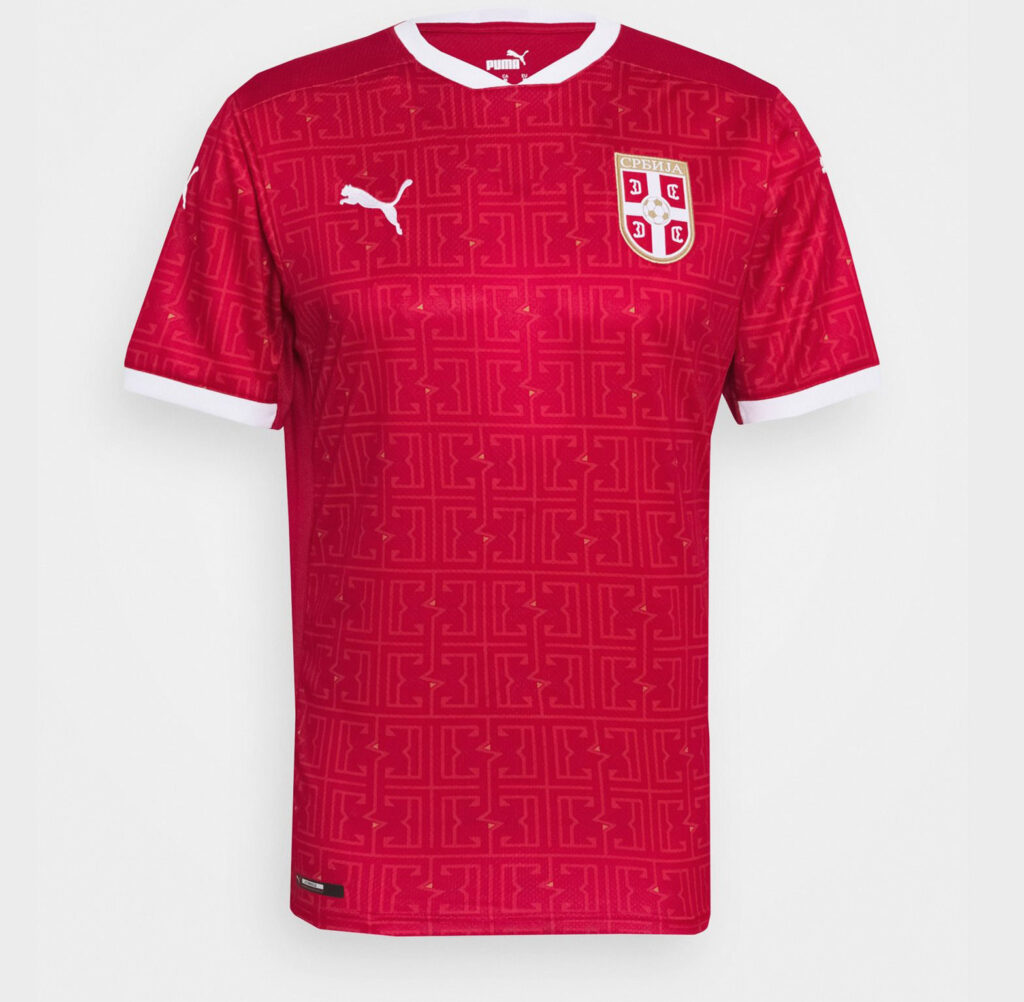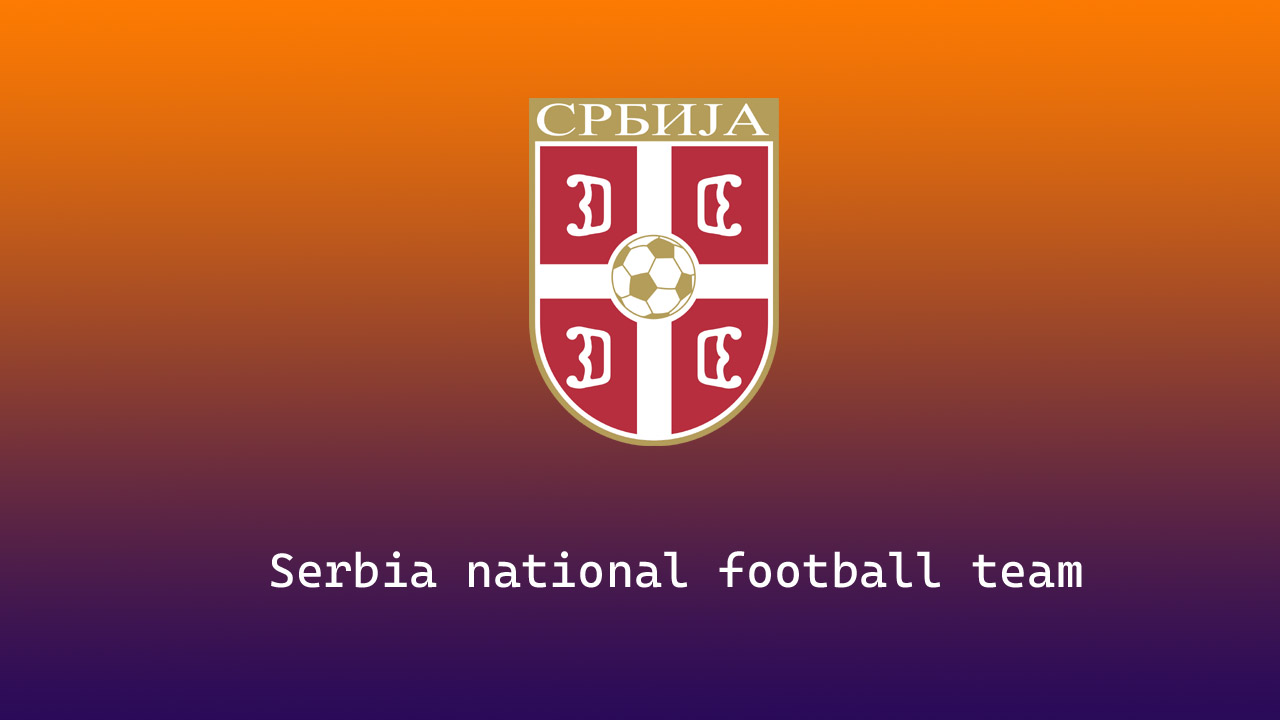Here you will get all information about Serbia national football team Players, Coach, FIFA Rankings, Nickname, and History.
Serbia’s national football team represents Serbia in the international men’s soccer tournament. It is governed by the governing body of football in Serbia, the Serbian Football Association.
Following the breakup of SFR Yugoslavia and its football team in 1992, Serbia was represented (along with Montenegro) in the new FR Yugoslav national football team. Despite qualifying for Euro 92, the team was banned from the tournament due to international restrictions, and the same rule applies to World Cup 94 and Euro 96 qualifiers.
The first friendly match was played and with the easing of restrictions, the golden generation of the 90’s finally participated in the World Cup of ’98, reaching the round of 16 and quarter-finals in Euro 2000. The national team played in the FIFA World Cup in 2006, 2010, and 2018, but failed to advance beyond the group stage. Stage each time. They will have to participate in the next FIFA World Cup 2022.
Team Profile summary
| Association | Fudbalski savez Srbije (FSS) |
| Nickname(s) | Орлови / Оrlovi (The Eagles) |
| Confederation | UEFA |
| FIFA code | SRB |
| FIFA rank | 29 (29 November 2023) |
| Most Caps | Dejan Stanković (105) |
| Top Scorer | Aleksandar Mitrović (44) |
| Home stadium | Rajko Mitić Stadium |
| Head coach | Dragan Stojković |
Serbia national football team History
Although the Federal Republic of Yugoslavia was established on 28 April 1992, due to international sanctions imposed by the Yugoslav wars, which barred the country from participating in international sporting events, the football team played its first match on 23 December 1994. Didn’t play until they lost 2-0 to Brazil in Porto Alegre, Brazil. Since then, the team has qualified for the World Cup twice, in 1998 and 2006, and once in 2000 for the European Championship. In 2003, with the reorganization of the country as Serbia and Montenegro, the team changed its name. The first international match between Serbia and Montenegro was against Azerbaijan in Podgorica on 12 February 2003 and ended in a 2-2 draw.
On May 21, 2006, Montenegro voted to dissolve its political union with Serbia. On June 3, Montenegro became an independent state, meaning that separate Montenegrin national teams would participate in future tournaments. It had no effect on the 2006 World Cup final, in which the newly independent states of Serbia and Montenegro competed for the last time under the same flag but could not advance beyond the group stage.
On 16 August 2006, the new Serbian team played its first international match with a 3-1 victory over the Czech Republic.
Serbia was drawn in Group A with Portugal, the Republic of Ireland, Luxembourg, and Azerbaijan in the 2022 FIFA World Cup qualifiers.
After losing in a penalty shootout against Scotland in the UEFA Euro 2020 qualifying play-off, Ljubiša Tumbaković was sacked and replaced by national team hero Dragon Stojković.
Serbia began its qualifying journey in March 2021 with a 3-2 victory over the Republic of Ireland in Belgrade. It then drew 2-2 against Portugal. In this game, Serbia was trailing 2-0 at halftime but managed to get back into the match with goals from Philippe Kostich and Alexander Mitrovic. It ended in a draw after Cristiano Ronaldo’s goal was controversially rejected. After the game, Serbia won 2-1 against Azerbaijan in Baku.
This was followed by a 4-1 win over Luxembourg in Belgrade and a 1-1 draw against the Republic of Ireland in Dublin, where Serbia had the lead until the 87th minute when Melenkovic scored his own goal. The remaining matches were 1-0 against Luxembourg and 3-1 against Azerbaijan. After these matches, it was clear that Serbia needed a win against Portugal to qualify directly from the group. On 14 November 2021, Serbia faced Portugal in Estádio da Luz and had a goal led by Renato Sanches. However, an equalizer by Dušan Tadić later in the last minute of the second half, with Aleksandar Mitrović’s emotionally decisive goal, gave the Serbs a 2-1 victory, thus giving Serbia an automatic place in Qatar. Confirmed.
Serbia national football team Home Stadium
Serbia has no official national stadium and the team has played in various disciplines across the country. The Rajko Mitić Stadium is the second most popular venue after the Partizan Stadium, both grounds are located in the capital Belgrade.
Serbia national football team Kit 2024
In July 2014, a partnership was announced between the Serbian Football Association and the English manufacturer Umbro, the official supplier to Serbia, before Puma took over their home and away kits, on September 7, 2014. Debuted in France in a friendly match against 2014. On September 7, 2014, Serbia presented their latest kits, which they also used in the UEFA Euro 2016 qualifying campaign.

Kit Supplier
| Kit Supplier | Period |
|---|---|
| Adidas | 1974–2002 |
| Lotto | 2002–2006 |
| Nike | 2006–2014 |
| Umbro | 2014–2018 |
| Puma | 2018–present |
Who are Serbia’s National Football team players?
The following Serbia players were called up for the 2022 FIFA World Cup qualification. Have a look.
| No | Position | Player Name | Date of birth (age) | Caps | Goals | Club |
|---|---|---|---|---|---|---|
| 12 | GK | Predrag Rajković | 31-10-1995 (26) | 27 | 0 | Reims |
| 1 | GK | Marko Dmitrović | 24-01-1992 (30) | 18 | 0 | Sevilla |
| 23 | GK | Vanja Milinković-Savić | 20-02-1997 (25) | 2 | 0 | Torino |
| 5 | DF | Matija Nastasić | 28-03-1993 (29) | 34 | 0 | Fiorentina |
| 4 | DF | Nikola Milenković | 12-10-1997 (24) | 33 | 3 | Fiorentina |
| 13 | DF | Stefan Mitrović (vice-captain) | 22-05-1990 (31) | 30 | 0 | Getafe |
| 3 | DF | Filip Mladenović | 15-08-1991 (30) | 18 | 1 | Legia Warsaw |
| 2 | DF | Strahinja Pavlović | 24-05-2001 (20) | 17 | 1 | Basel |
| 6 | DF | Miloš Veljković | 26-09-1995 (26) | 17 | 0 | Werder Bremen |
| 19 | DF | Mihailo Ristić | 31-10-1995 (26) | 8 | 0 | Montpellier |
| 22 | DF | Aleksa Terzić | 17-08-1999 (22) | 4 | 0 | Fiorentina |
| 10 | MF | Dušan Tadić (captain) | 20-11-1988 (33) | 84 | 18 | Ajax |
| 8 | MF | Nemanja Gudelj | 16-11-1991 (30) | 46 | 1 | Sevilla |
| 17 | MF | Filip Kostić | 01-11-1992 (29) | 45 | 3 | Eintracht Frankfurt |
| 7 | MF | Nemanja Radonjić | 15-02-1996 (26) | 31 | 4 | Benfica |
| 20 | MF | Sergej Milinković-Savić | 27-02-1995 (27) | 30 | 5 | Lazio |
| 16 | MF | Saša Lukić | 13-08-1996 (25) | 26 | 1 | Torino |
| 14 | MF | Andrija Živković | 11-07-1996 (25) | 23 | 0 | PAOK |
| 18 | MF | Marko Grujić | 13-04-1996 (25) | 15 | 0 | Porto |
| 21 | MF | Uroš Račić | 17-03-1998 (24) | 5 | 0 | Valencia |
| 9 | FW | Aleksandar Mitrović | 16-09-1994 (27) | 71 | 44 | Fulham |
| 11 | FW | Luka Jović | 23-12-1997 (24) | 22 | 7 | Real Madrid |
Who are the Serbia national football team captain and coach?
Dušan Tadić is the captain of the Serbia national team. Dragan Stojkovic is the current manager of the Serbia national team.
Serbia national football team captain
Dušan Tadić is the captain of the Serbia national team. Have a look at the profile summary of Serbia’s current captain.
Profile summary
- Name: Dušan Tadić
- Date of birth/Age: Nov 20, 1988 (33)
- Place of birth: Bačka Topola
- Citizenship: Serbia
- Height: 1,81 m
- Position: Left Winger
- Agent: Soccer Mondial AG
- Current international: Serbia
- Caps/Goals: 84 / 18
Serbia national football team Coach
Dragan Stojkovic is the current manager of the Serbia national team. Have a look at the profile summary of the team’s current coach.
Profile summary
- Name: Dragan Stojkovic
- Date of birth/Age: Mar 3, 1965 (57)
- Place of birth: Niš
- Citizenship: Serbia
- Height: 1,75 m
- Position: Attacking Midfield
- Former International: Serbia-Mont.
- Caps/Goals: 43 / 6
Serbia national football team world rankings
FIFA World Ranking: #29
UEFA Ranking: #14
Serbia’s national football team trophies
- FIFA World Cup
- Fourth place: 1962
- Third place: 1930
- UEFA European Championship
- Runners-up: 1960, 1968
- Fourth place: 1976
- Summer Olympics
- Gold Medal: 1960
- Silver Medal: 1948, 1952, 1956
- Bronze Medal: 1984
- Mediterranean Games
- Winners: 1971, 1979
- 1945 Yugoslav Football Tournament
- Winners: 1945
Source: FootballArroyo.co.uk
Read Also: How to watch FIFA World cup 2022 in Serbia

